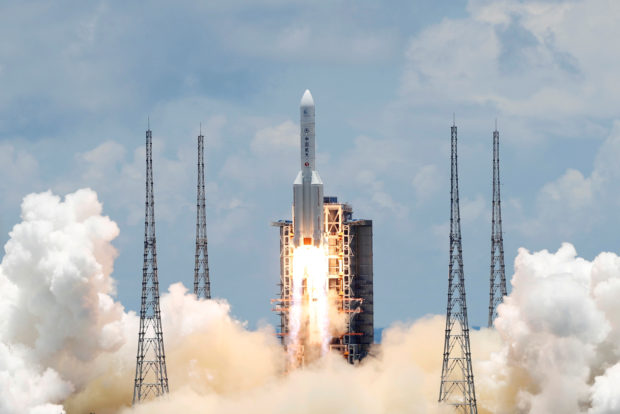
The Long March 5 Y-4 rocket, carrying an unmanned Mars probe of the Tianwen-1 mission, takes off from Wenchang Space Launch Center in Wenchang, Hainan Province, China July 23, 2020. (REUTERS/File Photo)
BEIJING – An uncrewed Chinese spacecraft successfully landed on the surface of Mars on Saturday, state news agency Xinhua reported, making China the second space-faring nation after the United States to land on the Red Planet.
The Tianwen-1 spacecraft landed on a site on the Southern Utopia Plain, “leaving a Chinese footprint on Mars for the first time,” Xinhua said.
The craft left its parked orbit at about 1700 GMT Friday (0100 Beijing time Saturday). The landing module separated from the orbiter three hours later and entered the Martian atmosphere, the official China Space News said.
It said the landing process consisted of “nine minutes of terror” as the module decelerates and then slowly descends.
A solar-powered rover, named Zhurong, will now survey the landing site before departing from its platform to conduct inspections. Named after a mythical Chinese god of fire, Zhurong has six scientific instruments including a high-resolution topography camera.
The rover will study the planet’s surface soil and atmosphere. Zhurong will also look for signs of ancient life, including any sub-surface water and ice, using a ground-penetrating radar.
Tianwen-1, or “Questions to Heaven”, after a Chinese poem written two millennia ago, is China’s first independent mission to Mars. A probe co-launched with Russia in 2011 failed to leave the Earth’s orbit.
The five-tonne spacecraft blasted off from the southern Chinese island of Hainan in July last year, launched by the powerful Long March 5 rocket.
After more than six months in transit, Tianwen-1 reached the Red Planet in February where it had been in orbit since.